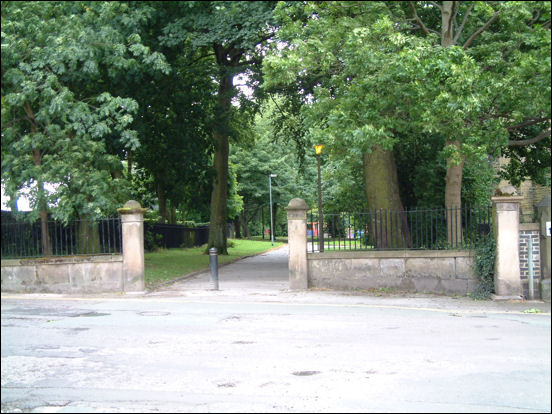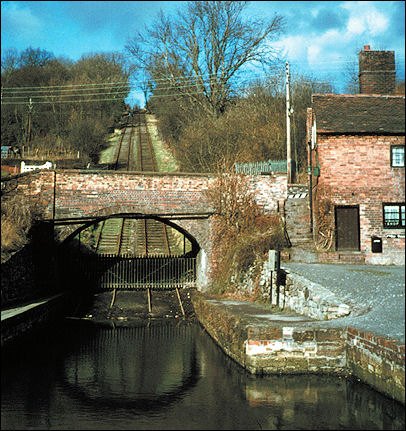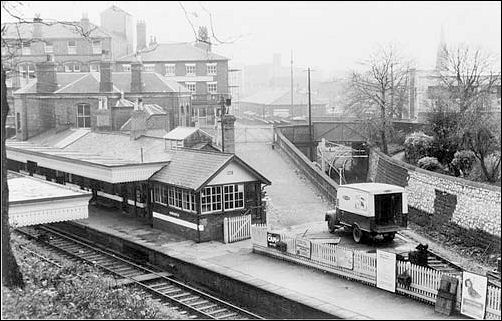|
Newcastle-under-Lyme Junction Canal
"Raising interest in
canal lift idea was a problem"
  
click the
"contents" button to get back to the main index & map
next: Sir Nigel Gresley's canal
previous:
Newcastle-under-Lyme
Canal Pt 3
|
Historian Fred Hughes
writes....
There’s
little doubt that the canal from Stoke to Newcastle was compromised by the
so-called Gresley monopoly. Sir Nigel Gresley’s Canal running from his
coalmines at Apedale and the Stoke Canal both terminated in Newcastle. All
that was needed was to connect them – but was there a will.
“Both
canals had been relatively easy to put together. The next move was to join
the Stoke Canal ending at Brook Lane to the Apedale Canal a mile up the
road at Cross Heath,” says Andy Perkin of the Potteries Heritage Society.
“So a connecting waterway known as the Junction Canal was cut. Although it
finished level with Brook Lane it stopped at a higher point making the
handling of haulage between the two terminals laborious. One answer was to
construct an inclined plane, a sort of rail lift, in the location of the
steep gradients of Occupation Street. But the inclined plane was never
constructed and interest waned.”
The
Junction Canal through Newcastle opened in 1799.
|
“Gresley’s
Apedale Canal ended half-way along Liverpool Road just below and opposite
where St Michael’s Road is today,” adds historian Steve Birks. “The
Junction Canal started here and curved east around the town centre through
the Brampton and into Stubbs Fields. As Andy points out, when it was up
and running the transferral of goods between the two terminals from one
level to another had to be made manually. Clearly this was never going to
be commercially viable. But too much time was spent considering
alternatives.”

the end of Marsh Parade
and the gates to Stubbs Walks
this was the route of the Junction Canal
|
The
inclined plane had been talked about for a long time. But continued
postponement increased the cost of what was a major engineering project.
Mining historian and chairman of Newcastle Civic Society, Jim Worgan, has
studied the options faced by the shareholders.
“The
canal from Stoke to Newcastle was hampered immediately by Gresley’s
monopolising conditions on the price of coal carriage,” Jim says. “Trading
was generally poor except for the transport of coal to and from Gresley’s
own coal wharf in Liverpool Road. The other wharf, belonging to the Stoke
Canal at Stubbs Field, was hardly used at all. To remedy this, the
shareholders brought the inclined plane project back onto the agenda to
provide cost-effective means of conveyance up the hill through Occupation
Street. In 1831 the frustrated shareholders called upon the engineering
whiz kid of the day, none other than the railway genius George
Stephenson.”

The Hay Inclined plane in Shropshire
this is what the Newcastle Junction canal plane might have
looked like if completed
Stephenson was a Geordie born in 1781 to parents who were both
illiterate. As a consequence he received sparse education eventually
paying for night classes when he was 17 from his earnings at a local
colliery. After marriage he supplemented the household income by making
shoes and mending clocks. By the time the new owner of the Apedale
mines, Richard Edensor Heathcote, somewhat half-heartedly invited him to
sort out the Newcastle Junction Canal, George Stephenson had invented
Rocket, the fastest train on earth, and had established the world’s
first commercial railway between Stockton and Darlington which pioneered
rail travel as we know it today.
Jim
continues. “In 1832 Stephenson presented his designs for the construction
of an inclined plane from the basin at Brook Lane to Stubbs Fields. The
starting cost was £2,206. Despite this reasonable sum (about £1.5 million
today) the shareholders had difficulty in persuading Heathcote to lease
the Junction Canal to liberate funds to build Stephenson’s project.
Heathcote eventually turned his back on it; after all his investments were
already safe – the great iron and coal master wasn’t particularly bothered
about linking with Stoke. Beside the industrial world was opening-up to
railways and he could see superior benefits.”
In fact
by 1846 a new rail line had been laid-out from Stoke to Silverdale through
Newcastle. The Stephenson’s inclined plane on the Junction Canal was no
more than a half-remembered dream.
“Most
of the canal bed was used for rail track,” says Jim. “Of course that’s now
gone as well. But you can follow the line quite easily from Marsh Parade
and Water Street, across King Street by the Borough Arms, along a greenway
and under Queen Street into West Brampton. From here the railway travelled
through a tunnel under Liverpool Road to Knutton and Silverdale. The
Junction Canal however took a different route from West Brampton.”

Newcastle railway station
- situated off King street
30 May 1964
Newcastle railway station was situated off King street, across from the
Borough Arms Hotel, as this photograph clearly shows.
Jim
offers to walk me along what’s left of the bed of the Junction Canal. The
start point is Hempstalls Lane.
“This
area was once occupied by the grounds of Rye Bank House,” he points out,
“An early home of the Caddick family and built alongside the railway in
1847. Nearby were the Brampton Sidings which still carry the name today.”
Jim and I
walk along a dead-straight stretch now called Croft Road, through a modern
housing estate via Honeywood and into a row called Brackenberry all of
which stand on the canal bed.
“We are now walking parallel to St Michael’s Road Cross Heath,” says Jim.
“From this point the Junction Canal passed under Liverpool Road where it
connected with the Gresley Canal near Swift House. As for the actual
connection – it’s been long buried by modern industry and transportation.”
 more on the
Junction canal
more on the
Junction canal
|
![]()
![]()
![]()